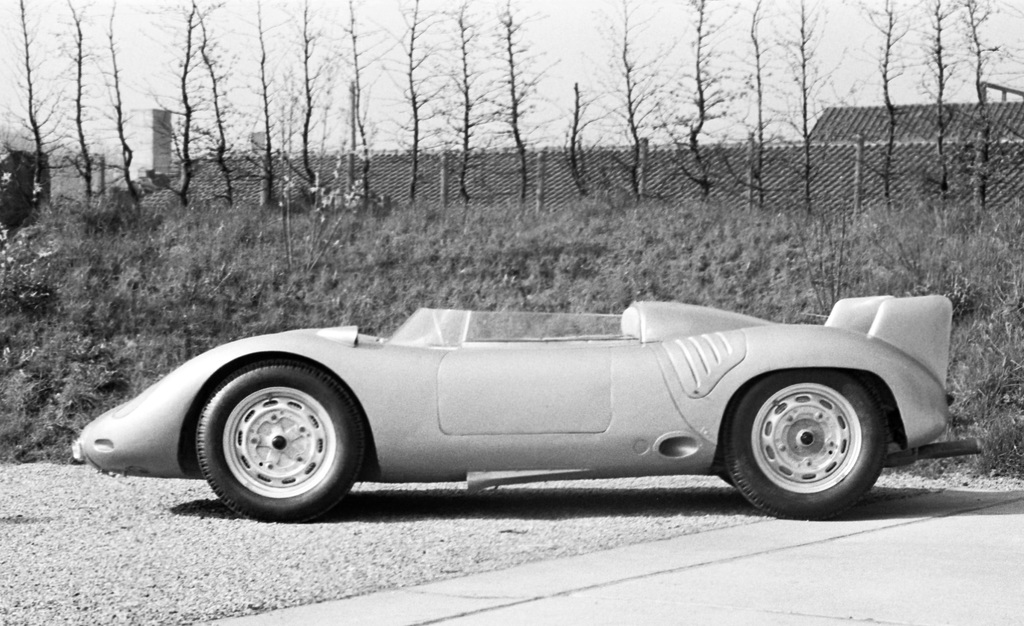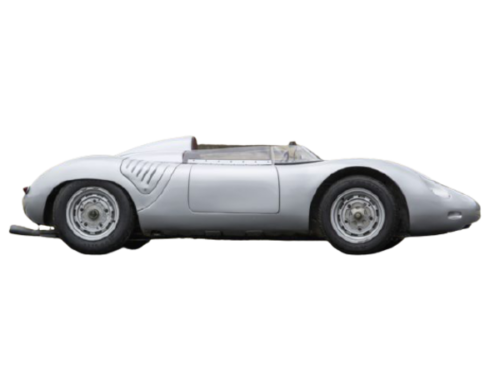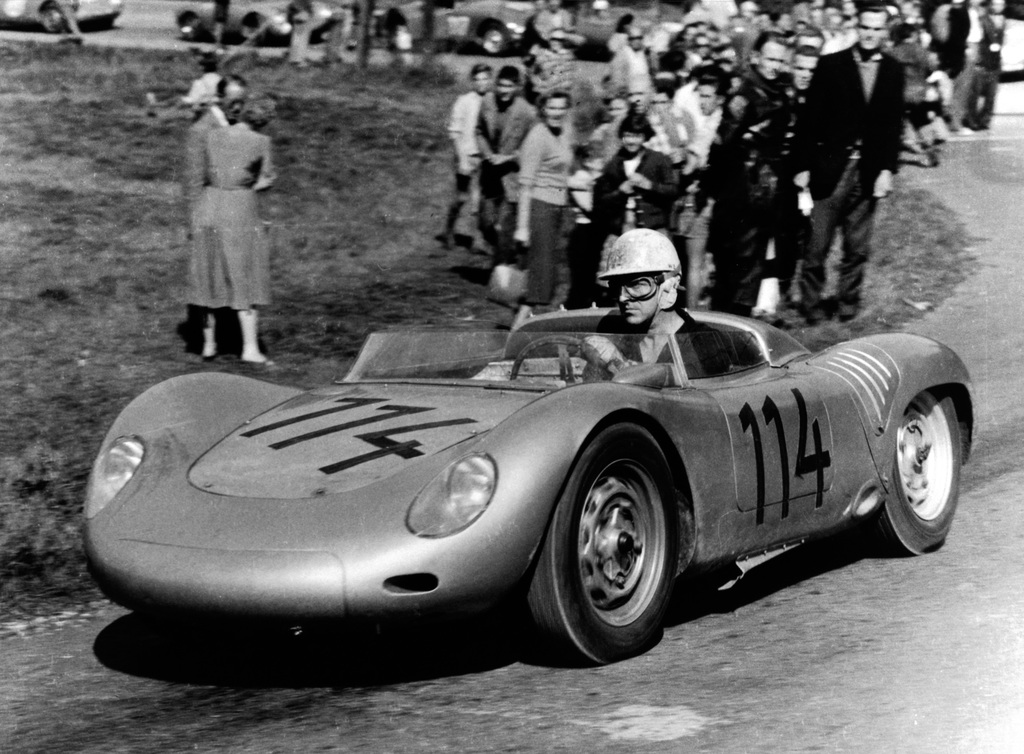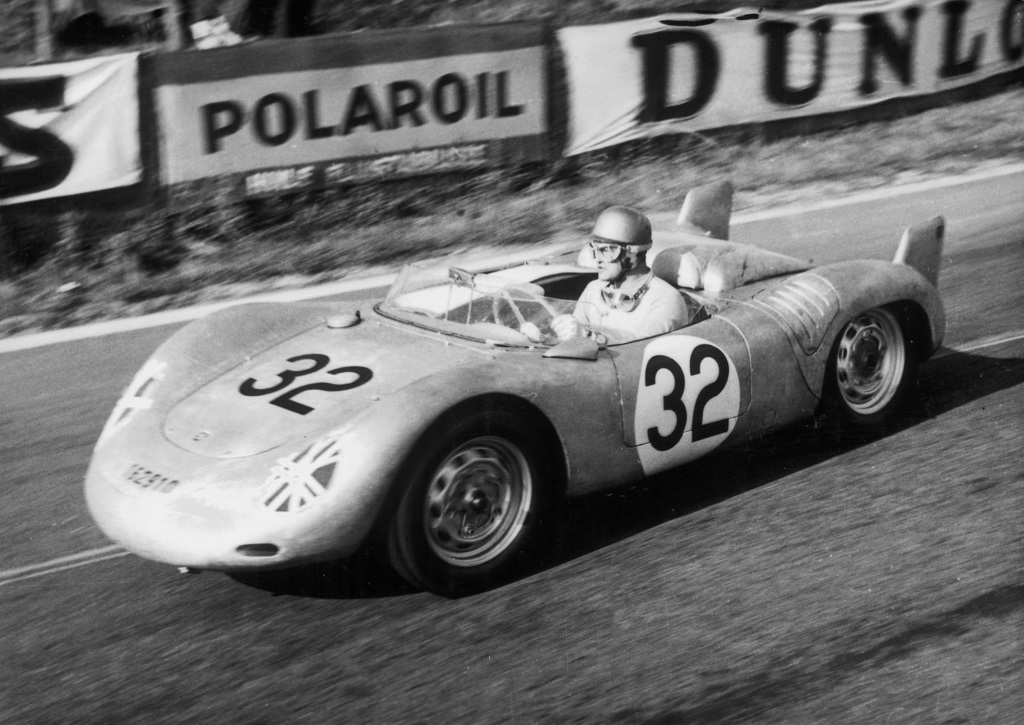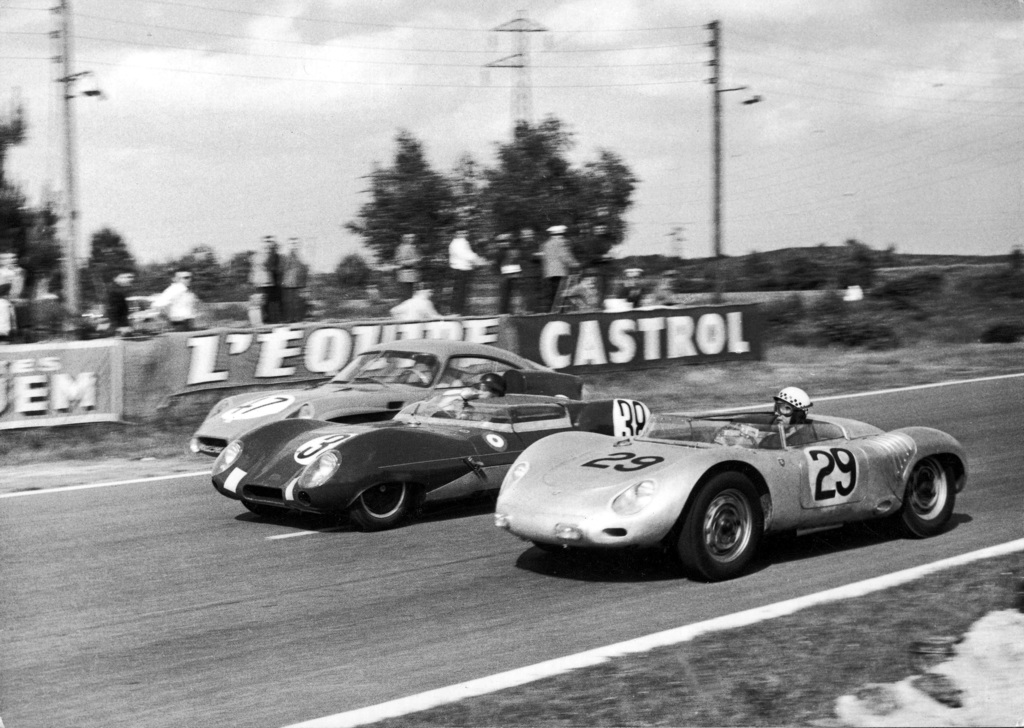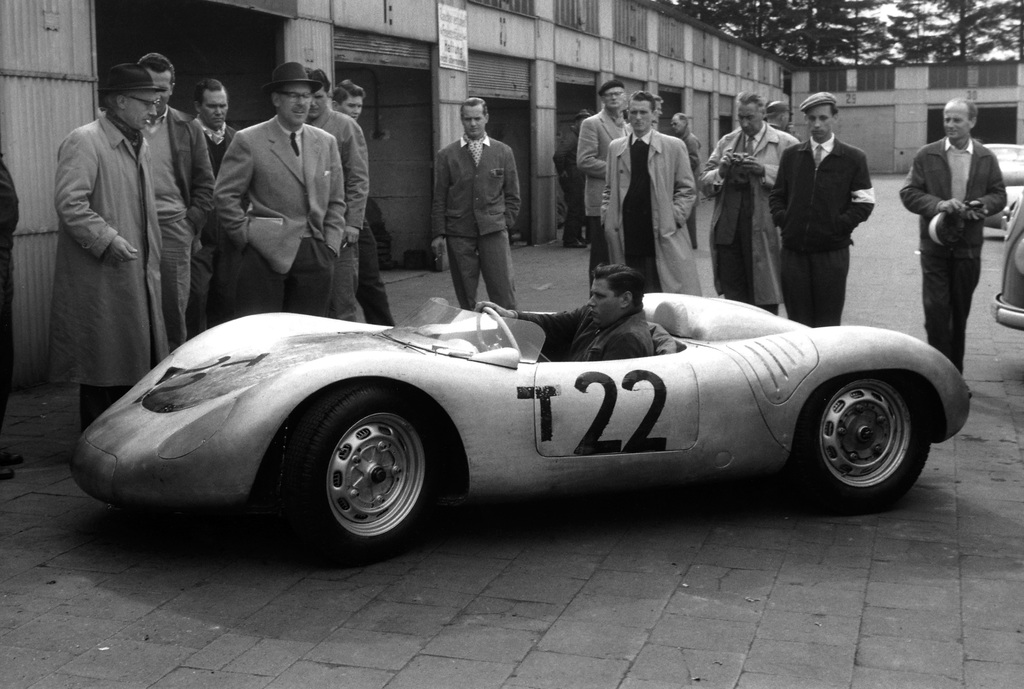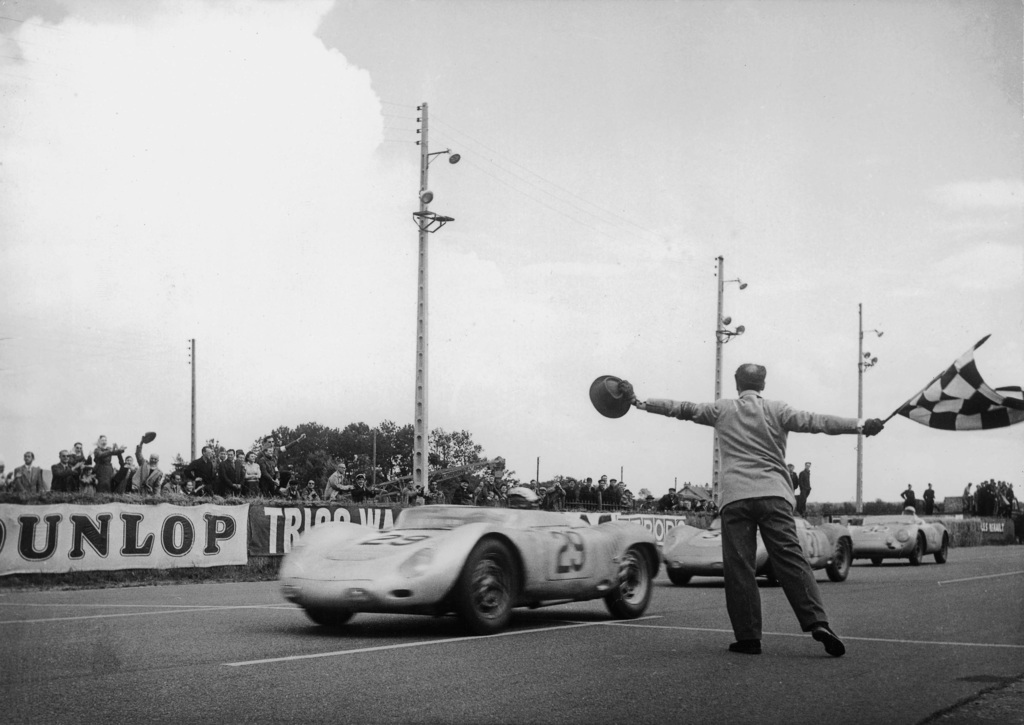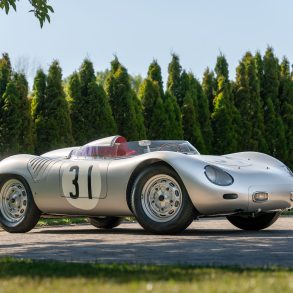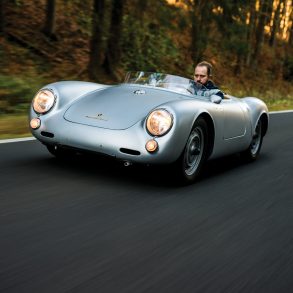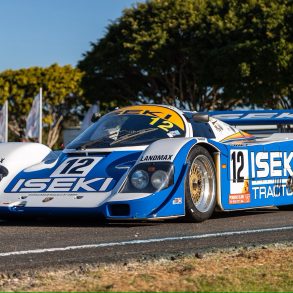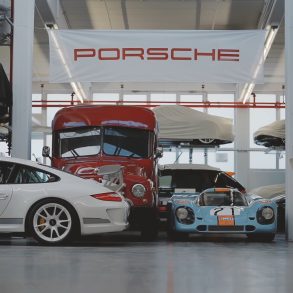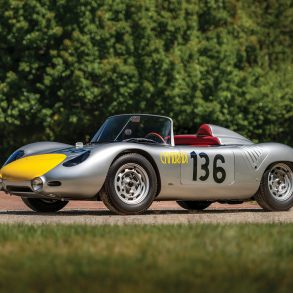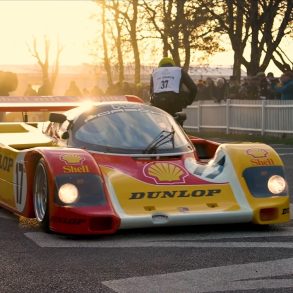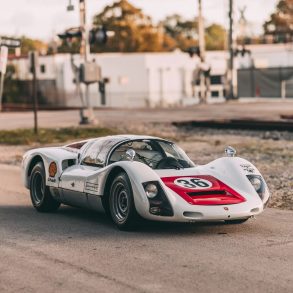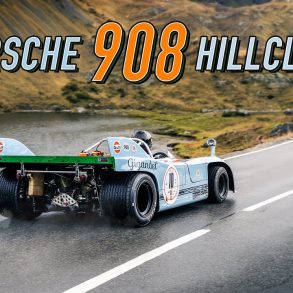Porsche 718 RSK Spyder (1957-1959)
The Porsche 718 RSK Spyder was the culmination of years of competition racers by Porsche. Porsche improved every year and became more and more competitive with its small displacement performance machines.
In 1952 Porsche created the 4-cam Typ 547 engine designed by Ernst Fuhrmann. Starting with 1,498cc, Fuhrmann’s powerhouse little horizontally opposed four-cylinder had a bore/stroke ratio of 0.78, thoroughly modern in engines built decades later and nearly unprecedented for 1952. The 85mm cylinder bore made relatively huge intake and exhaust valves possible in the hemispherical combustion chambers. Four overhead camshafts were driven by an intricacy of shafts and bevel gears operating the valve stems through interposed fingers that reduced side thrust.
The engine’s performance was proven in cars like the early 550 Spyders. After the 550A, the time was right for the Spyder’s ultimate form, the Porsche 718 RSK, with development beginning in 1956.
In 1957, at the Nurburgring circuit, in the middle of the racing season, a well-kept secret concerning the 718 RSK was aired. Compared to its predecessor it now had a lowered body with rear fin. The 550 A Spyder car with its 1,489 cc engine developed 142 hp at 7,500 rpm. It sold in the region of 30 models. After several outstanding results in the major long-distance races of the season the 718 model came in runner up in the 1958 World Championship’s sports car category.
The successor to the 550 A Spyder is improved in many respects. A space frame of seamless steel tubing provides high rigidity at a very low weight; the suspension and the drum brakes have undergone optimization. The aerodynamics have been refined – for Le Mans the co-driver’s side is covered with an aluminium sheet.
Owing its name, RSK, to the shape of the front suspension torsion bar tubes which on the top sloped down to meet the lower torsion bar tubes at their midpoints, shaping the letter “K”, the design, intended to better master camber change in cornering, did not survive testing, but the nickname persisted. Even after parallel torsion bars replaced the “K”-shape the steering box remained at the center of the front track with equal length track rods. A double U-jointed steering column gave Porsche the option of offset or center steering wheel mounting. The body was slimmed and lowered, with a rounded nose. The rear air vents were discovered to be better at admitting air to the engine’s intake and the cooling system than they were at exhausting it.
While retaining its swing axle concept the rear suspension underwent a notable redesign with a Watt’s linkage replacing the historic trailing arm with two radius rods, one leading forward from the bottom of the hub and another back from the top that securely positioned the rear wheels. Porsche’s rear torsion bars were succeeded by a pair of tubular shock absorbers with concentric coil springs.
Car No. 29 is powered by a Fuhrmann engine that was enlarged to 1,587 cc, the other three RSK feature the 1,498 cc unit planted in front of the rear axle. Jean Behra and Hans Herrmann clinch a sensational third place overall – the first overall podium result for Porsche KG right in time for the 10th anniversary of the young sports car manufacturer.
With Weber carbureted 1,587cc Type 547/3 engines Jean Behra and Hans Herrmann drove an RSK to an unprecedented third overall at Le Mans in 1958. Later in 1958 Behra finished fourth at Riverside in the Los Angeles Times Grand Prix for sports cars headed only by Chuck Daigh in a Chevrolet-powered Scarab, Dan Gurney in a Ferrari 375 Plus and Bill Krause in a Jaguar D-Type.
The success of the Porsche Type 718 RSK can be measured not only in terms of its race wins but also its adaptability. In 1957 and 1958 the FIA allowed full envelope bodywork in 1.5 liter Formula 2. The center-mounted steering box in the 718 RSK made it supremely adaptable to this formula and Jean Behra captured an F2 win at Rheims, followed by another F2 win by Edgar Barth at the Berlin Grand Prix at Avus.


